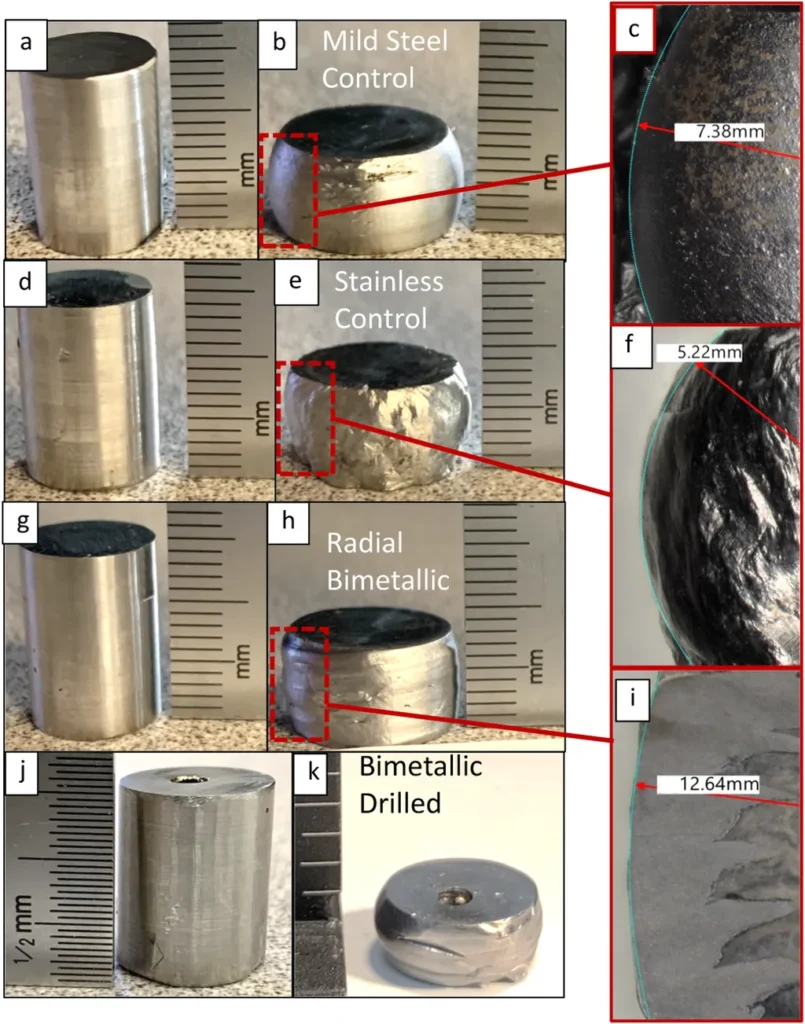In a groundbreaking study published in the journal *Materials Research* (translated from Portuguese), researchers have explored the potential of additive manufacturing to create high-performance, bimetallic components for the energy sector. The study, led by Joélson Vieira da Silva, focuses on the development of a hot-forged crosshead composed of two distinct metal alloys: ASTM B221 6060 aluminum and AWS A5.36 E110C-G M low alloy steel. This innovative approach could revolutionize the way critical components are manufactured, offering enhanced durability and customized properties tailored to specific industrial needs.
The research delves into the metallurgical aspects of the bimetallic joint, particularly the impact of warm forging on the interface between the two metals. By employing additive manufacturing techniques, the team was able to deposit layers of wear-resistant steel on the outer surface of the crosshead, while the inner structure was filled with rolled aluminum. This hybrid design combines the best attributes of both materials, creating a component that is both strong and lightweight.
“Our analyses showed that the intermetallic region had good adhesion properties after warm forging,” said Silva. “However, we also observed that excessive formation of iron oxides could compromise the ductility of the joint. Minimizing the formation of intermetallic phases is crucial for ensuring the integrity and performance of the final product.”
The implications of this research are significant for the energy sector, where components like crossheads are subjected to extreme conditions and wear. By leveraging additive manufacturing, engineers can create complex, high-performance parts with customized properties, tailored to the specific demands of their applications. This could lead to more efficient and reliable machinery, reducing downtime and maintenance costs.
“The results indicate that, with the formation of intermetallic phases minimized, additive manufacturing makes it possible to create complex high-performance components with customized properties,” Silva explained. “This serves as a guide for evaluating the viability of this approach in further studies.”
As the energy sector continues to evolve, the need for innovative manufacturing techniques that can produce high-performance components becomes increasingly important. This research not only highlights the potential of additive manufacturing in creating bimetallic components but also sets the stage for future developments in the field. By pushing the boundaries of what is possible, researchers like Silva are paving the way for a new era of industrial innovation.
The study, published in *Materials Research*, offers a compelling glimpse into the future of manufacturing, where the fusion of different materials and technologies can lead to breakthroughs that transform entire industries. As the energy sector continues to demand more from its components, the insights gained from this research will be invaluable in meeting those challenges head-on.

